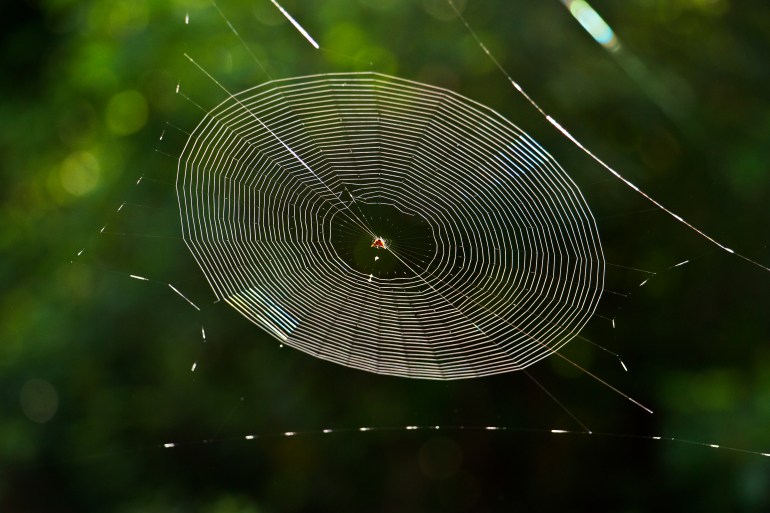Spiders have an amazing ability to build intricate and beautiful webs, but how they are built is a mystery.
Spiders show a superior ability to weave complex geometric webs of a high degree of beauty as well, but these webs - which have fascinated human imagination for thousands of years - have been a puzzle for scientists who have always wondered how they are built.
Amazing nets
Recently, a research study published in Current Biology provided an explanation for this puzzle.
The scientists deployed night vision cameras and used artificial intelligence to study how the eight legs of the spider move as it builds its web, which enabled them to come up with a model that can predict the stages of building the web based on the position of the spider's legs.
According to the press release published by Johns Hopkins University on November 2, commenting on the study;
Behavioral biologist and study leader Andrew Gordes notes, "Spider webs are really amazing and impressive, but we don't know much about this remarkable behavior that enables their little brains to create them."
Gordis adds that they "understood the full motions needed to build this web, which has never been described with such precision for any animal structure."
Although animals do not build their homes in the same way that humans do, we are not unique in our ability to build;
Some higher mammals build nests similarly as many birds do.
The crab builds mud buildings like chimneys, and some sedge flies larvae build protectors in which to live, but all these buildings are not complex, diverse and beautiful like spider webs.
motion tracking
To find out the movements that the spider was able to build its web, the scientists tracked 6 spiders - every night - of the type "Uloborus Diversus";
It is a non-venomous insect-eating spider, with a length of a few millimeters, and this spider - which is spread in the United States and Mexico - every night builds complex webs to trap its prey.
The researchers recorded the movements of spiders as they built their webs at night using cameras and infrared lights, and these movements were recorded from 26 locations distributed over different areas of the body of each spider that were tracked each night.
However, building a complete map of the spider's movements is difficult, which is confirmed by the study's first author, Abel Korver, saying, "Even if we track the movement by recording a video of it, there are many legs that need to be monitored over a long period (that is, during data analysis). movement in the recorded video), which requires many people.”
"Manually tracking the changes that occur in each frame (the sequence of images that make up the video) is tedious, so we trained a synthetic tracking program that can trace the positions of the spider's legs - across the different frames (of the video) - so that we can document every movement and construction," Korver adds. The entire network of these movements.
Even if the final shape of the web differs from one spider to another, the rules used in construction are the same (Shutterstock)
Single motor skills
In this way, the researchers were able to record how 21 spider webs were built, spanning hours, including the position of the different body parts that helped the spiders build their intricate webs.
Hence, this is a first step towards understanding how the brains of young spiders work in order to design this complex network.
The researchers discovered that this web-building process involved the same movements and motor skills in all tracking spiders, so much so that it is possible to predict which part of the web will be built based on the position of the leg only.
"Even if the final shape of the web differs slightly from one spider to another, the rules used in construction are the same, which means that these rules are encoded in their brains, so in the future we will be interested in knowing how these rules are encoded in neurons."

